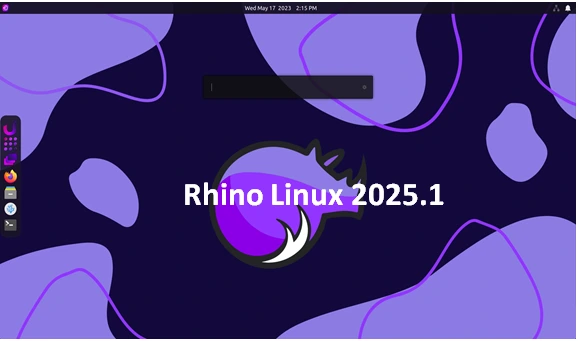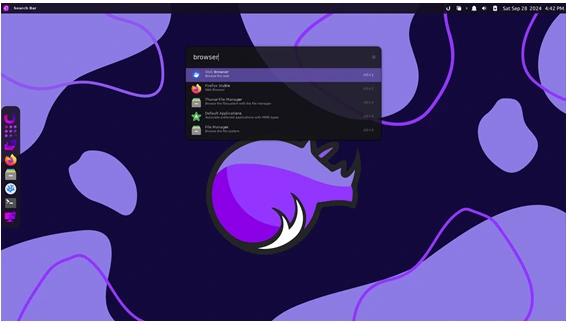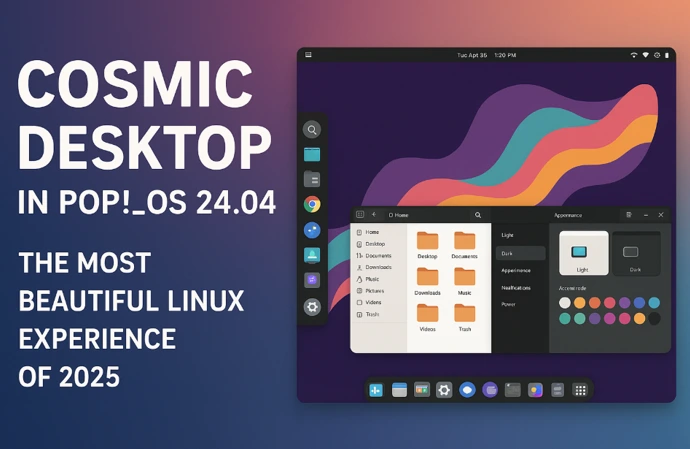
Exploring the Latest Updates in Rhino Linux 2025.1
As the world of Linux distributions continues to evolve, one standout contender that has been steadily gaining attention is Rhino Linux. Known for its rolling-release model, Rhino Linux has carved out a niche for itself as an Ubuntu-based distribution offering a seamless blend of stability and cutting-edge software. With the anticipated release of Rhino Linux 2025.1, users are eager to explore the new features, improvements, and enhancements that make this version a must-have for Linux enthusiasts and newcomers alike.
In this blog post, we will dive deep into the latest updates in Rhino Linux 2025.1, exploring everything from system improvements and desktop enhancements to package management upgrades and community-driven features. Whether you’re a seasoned Linux user or someone considering a switch, this comprehensive guide will walk you through what makes Rhino Linux 2025.1 a game-changer.
What Is Rhino Linux? A Quick Refresher
For those unfamiliar, Rhino Linux is a relatively new player in the Linux distribution space. Built on the solid foundation of Ubuntu’s Long-Term Support (LTS) releases, Rhino Linux combines the best of both worlds: the stability of Ubuntu and the flexibility of a rolling-release model. This means users can enjoy up-to-date software without the need for frequent reinstallations, making it an ideal choice for developers, power users, and enthusiasts who crave both reliability and the latest features.
At the core of Rhino Linux is its innovative package management system, Pacstall. Inspired by Arch Linux’s AUR, Pacstall simplifies the installation of user-contributed software packages, ensuring a streamlined and efficient experience.

What’s New in Rhino Linux 2025.1?
Hello Rhino: Your Gateway to the Rhino Ecosystem
One of the most prominent additions in this release is the Hello Rhino application. Designed using Rust and IcedTK, this intuitive tool acts as a centralized hub for new and existing users alike. It provides quick access to essential resources, such as:
- The Rhino Linux homepage
- Official blog
- Discord community
- Comprehensive documentation
The application automatically launches after installation, ensuring that users can familiarize themselves with the distribution’s ecosystem right away. A special shoutout goes to contributor Sundaram Krishnan for making this feature a reality.
Dynamic Workspaces in Unicorn Desktop
The Unicorn Desktop, Rhino Linux’s flagship desktop environment, now supports dynamic workspaces. Unlike the static four-workspace system of previous versions, the new dynamic setup creates and removes workspaces as needed. Inspired by the dynamic workspace approach in GNOME, this feature provides a cleaner, more adaptable workflow.
Aesthetic Updates: Custom GRUB Theme
Rhino Linux now sports a custom GRUB theme that beautifully aligns with the distribution’s aesthetic identity. This change enhances the overall visual experience, greeting users with a polished look right from the bootloader.
Testing Made Easy with Rhino Stampede
For those eager to experiment with upcoming features, Rhino Linux has introduced Rhino Stampede, a testing meta-package. This package is perfect for developers and adventurous users who want to get hands-on with work-in-progress features.
To install Rhino Stampede, simply run:
rpk install rhino-stampede-dev
Currently, the testing package includes Unicons, a new icon theme that’s still under development.
Pacstall: Powerful Enhancements
Pacstall, the heart of Rhino Linux’s package management, has received significant upgrades across multiple versions:
1. Version 5.5.x
Introduced internationalization and localization, enabling translations into various languages. This makes Pacstall more accessible to a global audience.
2. Version 6.0.x
Introduced new package conformity standards, replacing the _archive variable with an updated extract-to syntax. The arch array is now a required element for all packages, ensuring better compatibility and standardization.
3. Version 6.1.x
Added a -x or –debug flag, making it easier for developers to debug and refine their packages.
In addition, the Chaotic Pacstall Prebuilt Repository (PPR) is now live, allowing users to access prebuilt Pacstall packages without waiting for build times. Installation instructions for the Chaotic PPR can be found on its official page.
Key Features of Rhino Linux 2025.1
With the release of Rhino Linux 2025.1, the development team has introduced several updates and improvements that elevate the user experience to new heights. Here’s a detailed look at the standout features:
1. Enhanced Desktop Environment
One of the first things users will notice about Rhino Linux 2025.1 is the revamped desktop environment. Building on user feedback, the developers have introduced a new theme that’s both modern and visually cohesive. The improved UI focuses on minimalism and usability, ensuring that users can navigate their systems with ease.
Key enhancements include:
- Improved Window Management: Better multitasking support with improved tiling and workspace management.
- Customizable Themes: A broader range of pre-installed themes, allowing users to personalize their desktop experience.
- Updated Widgets: System widgets have been refined for better readability and functionality.
2. Kernel Updates
Rhino Linux 2025.1 ships with the latest Linux kernel, offering improved hardware compatibility, better performance, and enhanced security. This update ensures that Rhino Linux can run efficiently on a wide range of hardware, from older machines to the latest high-end setups.
3. Pacstall Improvements
Pacstall, Rhino Linux’s flagship package manager, has received significant upgrades in this release. Known for its simplicity and power, Pacstall now boasts:
- Faster Dependency Resolution: Improved algorithms ensure quicker installation times and fewer conflicts.
- Expanded Repository: An ever-growing library of user-contributed packages makes it easier than ever to find the software you need.
- New Commands: Enhanced CLI commands for better package management and troubleshooting.
4. Containerization Support
In response to the growing popularity of containerized applications, Rhino Linux 2025.1 introduces improved support for Docker, Podman, and other container technologies. Developers can now deploy and manage containers more efficiently, making Rhino Linux a compelling choice for development environments.
5. Security Enhancements
Security remains a top priority for the Rhino Linux team. The 2025.1 release includes several updates aimed at protecting users from emerging threats:
- Automatic Security Updates: Critical patches are applied in the background to minimize vulnerabilities.
- Enhanced Firewall Tools: Simplified interfaces for configuring and managing firewall rules.
- Improved Encryption Options: Better support for disk encryption and secure boot.
6. Documentation Overhaul
Recognizing the importance of accessible documentation, the Rhino Linux team has completely revamped their wiki. The new documentation is more comprehensive, user-friendly, and regularly updated, ensuring that users of all skill levels can find the help they need.
7. Performance Tweaks
Rhino Linux 2025.1 comes with a host of under-the-hood performance improvements. These include:
- Optimized Boot Times: Faster system startup thanks to streamlined initialization processes.
- Reduced Resource Usage: Better memory management for smoother performance, even on low-spec hardware.
- Enhanced Driver Support: Improved compatibility with GPUs, Wi-Fi adapters, and other peripherals.
Why Choose Rhino Linux 2025.1?
Rhino Linux isn’t just another Linux distribution; it’s a carefully crafted OS designed to meet the needs of modern users. Here’s why Rhino Linux 2025.1 stands out:
1. Rolling-Release Stability
Unlike traditional rolling-release distributions, Rhino Linux is built on Ubuntu’s LTS releases, providing a stable base while delivering the latest software updates. This unique approach ensures that users get the best of both worlds.
2. Developer-Friendly Features
From containerization support to robust package management, Rhino Linux offers tools and features that make it an excellent choice for developers. Whether you’re building apps, managing servers, or contributing to open-source projects, Rhino Linux has you covered.
3. Community-Driven Development
Rhino Linux thrives on its vibrant and active community. User feedback plays a crucial role in shaping each release, ensuring that the distribution evolves to meet the needs of its audience.
4. Accessible and Easy to Use
Despite its advanced features, Rhino Linux remains accessible to users of all skill levels. The intuitive desktop environment, comprehensive documentation, and active forums make it an ideal starting point for Linux newcomers.
Getting Started with Rhino Linux 2025.1
If you’re ready to give Rhino Linux 2025.1 a try, here’s how to get started:
1. Download the ISO
Head over to the official Rhino Linux website and download the latest ISO file for 2025.1. Make sure to verify the checksum to ensure the integrity of the file.
2. Create a Bootable USB
Use a tool like Rufus (Windows), Etcher (cross-platform), or dd (Linux) to create a bootable USB drive.
3. Install Rhino Linux
Boot from the USB drive and follow the on-screen instructions to install Rhino Linux. The installer is straightforward and guides you through partitioning, user setup, and system configuration.
4. Explore the Features
Once installed, take some time to explore the desktop environment, customize your setup, and dive into the Pacstall package manager. Don’t forget to check out the new wiki for tips and tricks.
Conclusion
Rhino Linux 2025.1 is a testament to the power of community-driven development and the endless possibilities of open-source software. With its innovative features, robust performance, and commitment to user experience, Rhino Linux continues to set a high standard for what a modern Linux distribution can achieve.
Whether you’re a developer, a Linux enthusiast, or someone looking to switch from another OS, Rhino Linux 2025.1 offers a compelling package that’s worth exploring. Download it today and experience the future of Linux computing.
For the latest updates, tutorials, and community discussions, visit the official Rhino Linux website or join their forums. Happy exploring!
Disclaimer
The information provided in this blog post, “Exploring the Latest Updates in Rhino Linux 2025.1,” is based on the latest available data at the time of writing. Features, updates, and system requirements mentioned here may be subject to changes as new updates or patches are released by the Rhino Linux development team. We recommend visiting the official Rhino Linux website or forums for the most accurate and up-to-date details. The views and opinions expressed in this article are intended for informational purposes and do not constitute professional advice. Use the software at your own discretion.
Also Read




